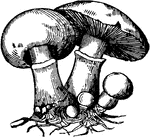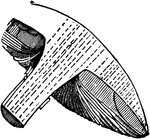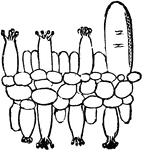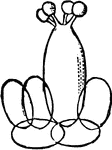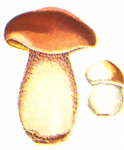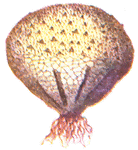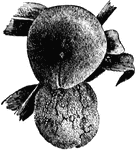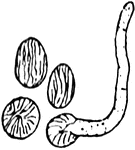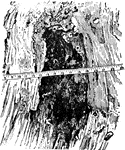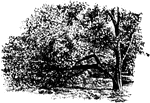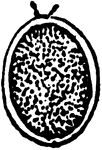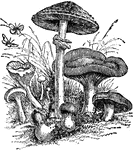
Mushroom
"The name of several classes of fungi. The best known is the common mushroom. It has a fleshy head,…

Agaricus Mushroom
The agaricus mushroom has a dotted cap. These mushrooms may be used for medicinal purposes.
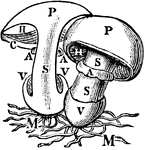
Meadow Mushroom
"Common Mushroom (Agaricus campestris). A, annulus; C, cortina; H, hymenium; M, mycelium; P, pileus;…

Peach Branch
Illustrated is a dead peach branch. The branch is dead due to the effects of the monilia funugs.
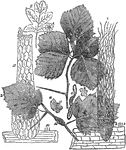
Cellular structure of peridia
"Under the power of about 90 diameters the general character of the peridia is seen. They are densely…
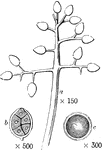
Peronospora Nivea
Peronospora nivea is a type of fungus that is common upon the leaves, stems, and roots of wild umbelliferoe…

Peziza Ciboroides
Pictured are the cups(b), stalks (c), and portion of tissue of sclerotium (sc) of the peziza ciboroides…
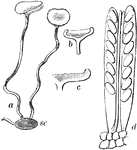
Peziza Postuma
Peziza postuma is a funugs. A shows a small specimen with two cups on slender stalks. B represents a…

Phytophthora Infestans
Phytophthora infestans is known as the potato disease fungus. This is the fungus that caused massive…
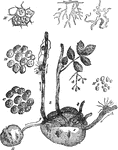
Potato Diseases at a Microscopic Level
"It is not unusual to fine a decayed spot in the center of potatoes otherwise apparently in good condition.…

Potato Leaf Attacked by Phytophthora Infestans
Pictured is a potato leaf that has been attacked by phytophthora infestans. Phytophthora infestans is…

Potato rot
Illustration of a potato infested with Peronospora infestans also known as 'potato-rot' observed from…
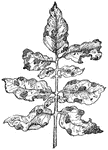
Early Blight of Potatoes
A fungal disease that affects potato plants. It causes small lesions on the plant, eventually killing…

Rafflesia Harrelli
"Fungi are either parasitic or, what is much the same thing, saprophytic– i. e., dependant upon…
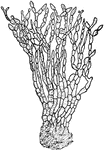
Brown Rot
Sometimes known as Brown Rot, Monilinia fructigena is a plant pathogen. "Sclerotinia fructigena. a,…
Stem Rust
Also known as Puccinia graminis. This fungus is a significant detriment to cereal crops. It is currently…

Scybalium Fungiforme
"Fungi are either parasitic or, what is much the same thing, saprophytic– i. e., dependant upon…

Shaggy Mane
"Shaggy-mane (Coprinus comatus) a, young specimen; b, section through a specimen older than a." -Whitney,…

Split Gill
The Split Gill mushroom (Schizophyllum commune): "a, Schizophyllum alneum; b, gills, or lamellae, enlarged;…
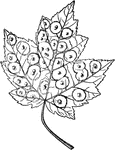
Maple spot gall
"The maple spot gall, so common on the leaves of the red maple, is made by the fungus-gnat of the order…

Stem of Young Pine Attached by Peridermium Pini
Illustrated in a stem of young pine attacked by peridermium pini. Peridermium pini is a fungus that…
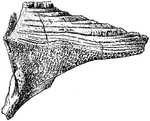
Trametes Pini
Pictured are pileus, openings of spore bearing tubes, and the bark of fir tree. Trametes pini is a fungus…
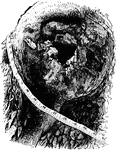
A Hole in a Tree
The decayed hole where a limb was removed. The wood-destroying fungi caused the tree to break.

Stub of a Limb of a Tree
A long stub left in pruning. The wound cannot heal. The tape shows how far the trunk is hollow. The…
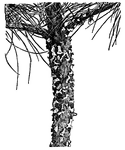
White Pine Tree Stem with Fungus
Pictured is the stem of a white pine tree attacked by the white pine blister-rust fungus, Cronartium…

Young Amanita
"Amanita is a genus of fungi, nearly allied to the mushrooms. Several of the species are edible, notably…
